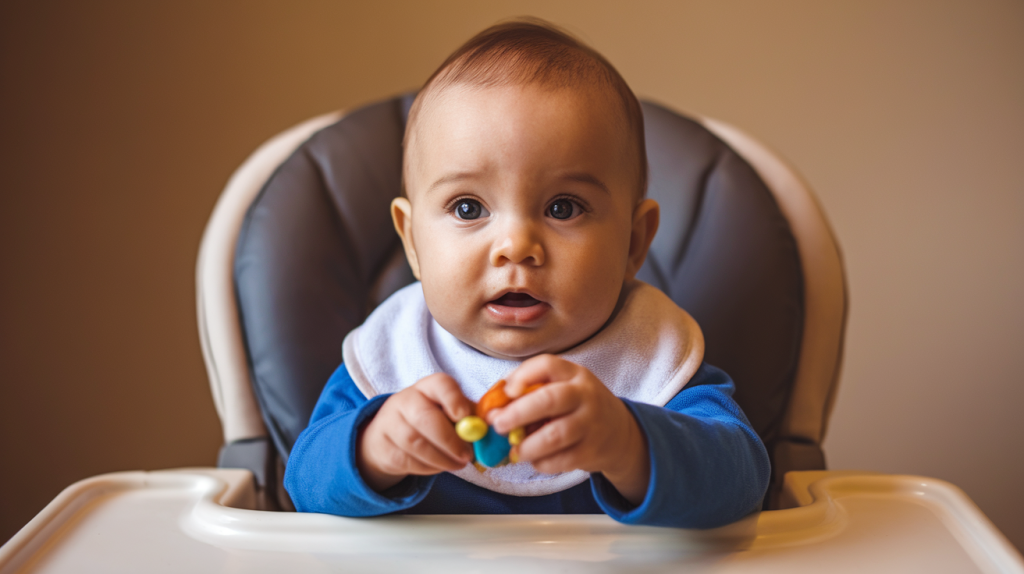Infant language development is a fascinating journey that begins from the moment a baby is born. The ability to communicate through language is a fundamental human skill, and the foundations are laid during the first few years of life. This early period is crucial for building the neural pathways that will support language throughout a child’s life.
Several key factors influence how infants acquire language. These include genetics, environment, social interactions, health, developmental factors, and nutrition. Each of these elements plays a significant role in shaping a child’s language abilities. For example, the genes a baby inherits can affect their predisposition to language learning, while the richness of their linguistic environment can impact vocabulary growth.
The language skills developed during infancy have far-reaching effects on a child’s future. Early language abilities are linked to later academic success, social skills, and even career prospects. Understanding these factors can help parents and caregivers create the best possible conditions for their baby’s language development. Let’s talk about the five key factors that shape how infants learn to communicate and understand language.
- How do genetics shape an infant's language abilities?
- What role does the environment play in infant language development?
- How crucial is social interaction for infant language learning?
- What impact do health and developmental factors have on language acquisition?
- How does nutrition affect an infant's language development?
- Nurturing Your Baby's Language Journey: A Holistic Approach
- Frequently Asked Questions
How do genetics shape an infant’s language abilities?

Genetics play a crucial role in shaping an infant’s language abilities. Just as your baby might inherit your eye color or hair texture, they also inherit genes that influence their capacity for language. These genetic factors can affect how quickly a child learns to speak, how well they process speech sounds, and even their potential for reading skills later in life.
The role of FOXP2 gene in speech and language processing
The FOXP2 gene, often called the “language gene,” is a key player in speech and language development. This gene helps control the formation of neural pathways crucial for language. If you’ve ever wondered why humans can speak while other animals can’t, FOXP2 is part of the answer.
How does FOXP2 work? It’s like a conductor in an orchestra, directing the expression of other genes involved in language. When this gene functions properly, it helps coordinate the complex movements needed for speech and aids in language processing. Variations in FOXP2 can lead to differences in language abilities among children.
Impact of CNTNAP2 on brain connectivity and language
Next up is CNTNAP2, another gene that’s important for language development. This gene affects how brain cells connect and communicate with each other. Think of it as the wiring in your baby’s brain – good wiring means better communication between different brain areas.
CNTNAP2 is particularly active in brain regions involved in language. When this gene works well, it helps create efficient neural networks that support language learning. Variations in CNTNAP2 have been linked to language delays and disorders in some children.
Influence of KIAA0319 on reading and articulation skills
The KIAA0319 gene might sound like a mouthful, but its role in language development is straightforward. This gene influences how well a child can process speech sounds and later, how easily they learn to read. It’s like a sound decoder in your baby’s brain.
When KIAA0319 functions optimally, it helps children distinguish between different speech sounds more easily. This skill is crucial for developing clear articulation and later, for connecting written letters to their corresponding sounds – a key skill in reading.
Genetic predisposition to language learning speed
Have you ever noticed how some children seem to pick up language faster than others? Part of this difference can be attributed to genetics. Some babies are born with a genetic makeup that predisposes them to quicker language acquisition.
This doesn’t mean that slower language learners are at a disadvantage. Every child has their own pace, influenced by a combination of genetic and environmental factors. The important thing is to provide a rich language environment for your baby, regardless of their genetic predisposition.
Twin studies confirming genetic influences on language
Twin studies have been particularly illuminating in understanding the genetic basis of language development. These studies compare identical twins (who share 100% of their genes) with fraternal twins (who share about 50% of their genes). The findings consistently show that:
- Identical twins are more likely to have similar language abilities
- They often reach language milestones at similar times
- If one identical twin has a language disorder, the other is more likely to have it too
These studies highlight the strong genetic component in language development. However, it’s important to note that even identical twins can have differences in their language abilities, underscoring the role of environmental factors.
Understanding the genetic basis of language development can help you appreciate the innate potential your baby has for language. However, genes are just the starting point. The environment you provide, the interactions you have with your baby, and the experiences you offer all play crucial roles in nurturing these genetic predispositions into fully developed language skills.
What role does the environment play in infant language development?

The environment your baby grows up in plays a crucial role in their language development. Imagine your child’s brain as a sponge, soaking up every word, sound, and interaction around them. This linguistic environment shapes how your little one learns to communicate and understand language.
The power of a rich linguistic surrounding
A rich linguistic environment is like a garden full of diverse plants. The more varied and abundant the language your baby hears, the more their language skills can flourish. This doesn’t mean you need to use complicated words or speak non-stop. Instead, it’s about creating an environment where language is naturally present and diverse.
Try narrating your daily activities to your baby. Describe what you’re doing as you cook, clean, or go for a walk. This constant exposure to language helps your child connect words with actions and objects, building their vocabulary and understanding of the world around them.
Impact of parental verbal engagement
Your voice is the most powerful tool in your baby’s language development toolkit. The way you talk to your child can significantly influence their language skills. But how exactly does this work?
When you engage verbally with your baby, you’re not just teaching them words. You’re also:
- Modeling proper sentence structure
- Demonstrating the rhythm and intonation of speech
- Showing how language is used in social interactions
Even before your baby can speak, they’re learning from these interactions. They observe how you use language to express thoughts, feelings, and needs. This lays the groundwork for their own future communication skills.
Importance of diverse vocabulary exposure
Variety is the spice of life, and it’s also key to robust language development. Exposing your child to a wide range of words helps build a rich vocabulary. But don’t worry, you don’t need to break out the thesaurus every time you speak to your baby.
Instead, try to use different words in your everyday conversations. For example, instead of always saying “big,” you might sometimes say “large,” “huge,” or “enormous.” This variety helps your child understand that there are many ways to express the same idea.
Effect of reading and storytelling on language skills
Books are a treasure trove of language learning opportunities for your baby. Reading aloud exposes your child to words and sentence structures they might not hear in everyday conversation. It also helps develop their listening skills and attention span.
Storytelling, whether from books or your own imagination, introduces your child to narrative structure. This helps them understand how ideas connect and flow, a crucial skill for both language comprehension and expression.
Try to make reading a daily habit. Even just 15 minutes a day can make a significant difference in your child’s language development.
Influence of socioeconomic factors on language environment
Socioeconomic factors can significantly impact a child’s language environment. Research has shown that children from higher-income families tend to hear more words per day than those from lower-income families. This “word gap” can lead to differences in vocabulary size and language skills by the time children start school.
However, it’s important to note that quality matters as much as quantity. Engaging in meaningful conversations with your child, regardless of your socioeconomic status, can have a powerful positive impact on their language development.
If you’re concerned about providing a rich language environment, remember that many resources are free or low-cost. Public libraries often offer free storytimes and book lending. Community centers may have language-rich programs for young children. Even simple activities like singing songs or playing word games can boost your child’s language skills.
Creating a language-rich environment for your baby doesn’t require expensive toys or programs. It’s about making language a natural, enjoyable part of your daily life together. By talking, reading, and engaging with your child, you’re laying the foundation for strong language skills that will serve them well throughout their life.
How crucial is social interaction for infant language learning?

Social interaction is the heartbeat of infant language learning. Your baby’s brain is wired to absorb language through social connections, making every interaction a potential learning moment. Let’s explore how these social exchanges shape your little one’s language skills.
Learning through engagement with caregivers
Imagine your baby as a tiny scientist, constantly observing and experimenting with language. Each time you talk, sing, or play with your child, you’re providing valuable data for their language experiment. These interactions aren’t just fun—they’re crucial learning opportunities.
When you engage with your baby, you’re teaching them:
- The back-and-forth nature of conversation
- How words connect to objects and actions
- The emotional aspects of communication
Try this: During everyday activities like diaper changes or feeding, talk to your baby about what you’re doing. This simple act can significantly boost their language exposure and understanding.
Importance of responsive communication
Have you ever noticed how your baby babbles and then pauses, as if waiting for a response? This is the beginning of turn-taking in conversation. Responsive communication is key to language development.
When your baby makes a sound or gesture, and you respond, you’re teaching them that communication has power. You’re showing them that their attempts at language have meaning and can affect their world. This encourages them to keep trying and learning.
Role of non-verbal cues in language acquisition
Language isn’t just about words. Non-verbal cues like facial expressions, gestures, and tone of voice play a huge role in how we communicate. For babies, these cues are often the first step in understanding language.
Your baby is watching your face intently when you speak. They’re learning to connect your expressions with the words you’re saying. This helps them understand the emotional content of language—whether you’re happy, sad, or excited.
Gestures are another important aspect. When you point to an object while naming it, you’re helping your baby make connections between words and the world around them.
Impact of peer interactions on language development
While adult interactions are crucial, don’t underestimate the power of peer interactions. As your baby grows, they’ll start to engage more with other children. These interactions provide a different kind of language learning experience.
With peers, your child practices:
- Using language in social situations
- Understanding different speech patterns and accents
- Learning age-appropriate vocabulary and phrases
Playdates, playgroups, or even trips to the playground can provide valuable opportunities for these peer interactions.
Benefits of diverse social settings for language learning
Exposing your child to diverse social settings can greatly enhance their language development. Different settings introduce new vocabulary, different ways of speaking, and varied social norms.
For example:
- At the grocery store, they might learn food names and shopping-related words
- At the park, they could pick up outdoor and nature vocabulary
- Family gatherings might expose them to different accents or even languages
Each new setting is a language-learning goldmine for your baby. The more varied their social experiences, the richer their language environment becomes.
Social interaction is the fuel that powers your baby’s language learning engine. Every conversation, every game of peek-a-boo, every trip to a new place is an opportunity for language growth. By providing a rich tapestry of social experiences, you’re giving your child the best possible foundation for language development.
What impact do health and developmental factors have on language acquisition?
Health and developmental factors play a significant role in how infants acquire language. These factors can shape the way a child learns to communicate, understand, and express themselves through language.
Effects of hearing impairments on language development
Imagine trying to learn a new language while wearing earplugs. That’s somewhat similar to what children with hearing impairments experience when learning language. Hearing loss can significantly impact a child’s ability to pick up speech sounds, understand spoken language, and develop clear speech.
However, with proper support and intervention, children with hearing impairments can still develop strong language skills. Here are some ways to support language development in children with hearing loss:
- Use visual cues and gestures along with speech
- Implement hearing aids or cochlear implants as recommended by doctors
- Engage in sign language or other visual communication methods
- Provide a quiet environment to minimize background noise
Early detection and intervention are key. The sooner a hearing impairment is identified and addressed, the better the outcomes for language development.
Influence of autism spectrum disorders on communication skills
Autism spectrum disorders (ASD) can significantly affect how a child communicates and interacts socially. Children with ASD may face challenges in understanding and using both verbal and non-verbal communication.
Some common language-related characteristics in children with ASD include:
- Delayed speech development
- Difficulty understanding abstract concepts or figurative language
- Repeating words or phrases (echolalia)
- Challenges in maintaining back-and-forth conversations
For children with ASD, language development often requires specialized support. Speech therapy, social skills training, and other interventions can help these children build their communication skills.
Impact of ADHD on language processing and expression
Attention-Deficit/Hyperactivity Disorder (ADHD) might not seem directly related to language, but it can have a significant impact on how children process and express language. Children with ADHD may struggle with:
- Following multi-step verbal instructions
- Organizing their thoughts for clear verbal expression
- Staying focused during conversations
- Processing complex language in noisy environments
These challenges can affect both receptive language (understanding what others say) and expressive language (communicating their own thoughts and ideas). Strategies to support language development in children with ADHD often focus on improving attention, working memory, and organizational skills.
Role of sensory processing disorders in language acquisition
Sensory processing disorders (SPD) can indirectly affect language development. Children with SPD may have difficulty processing and responding to sensory information, which can impact their ability to engage in language-rich interactions.
For example, a child who is oversensitive to sound might avoid noisy environments, potentially missing out on valuable language learning opportunities. On the other hand, a child who seeks out sensory input might have trouble sitting still for story time or focused conversations.
Supporting language development for children with SPD often involves creating a sensory-friendly environment and incorporating sensory activities into language learning.
Importance of early intervention for developmental delays
Early intervention is crucial when it comes to addressing developmental delays that can affect language acquisition. The earlier a delay is identified and addressed, the better the outcomes typically are.
Early intervention can involve a range of services, including:
- Speech and language therapy
- Occupational therapy
- Special education services
- Parent training and support
These services aim to support the child’s development and help them catch up to their peers. They also provide parents with strategies to support their child’s language development at home.
It’s important to note that every child develops at their own pace, and a delay in language doesn’t necessarily indicate a long-term problem. However, if you have concerns about your child’s language development, it’s always best to consult with a pediatrician or speech-language pathologist.
While health and developmental factors can present challenges to language acquisition, they don’t have to be insurmountable barriers. With appropriate support, intervention, and a nurturing environment, children facing these challenges can make significant progress in their language development. As a parent, your role in advocating for your child and supporting their unique needs is invaluable in this process.
How does nutrition affect an infant’s language development?
Nutrition plays a crucial role in your infant’s overall development, including their language skills. The food your baby eats provides the building blocks for their growing brain, which in turn affects their ability to learn and use language.
Role of omega-3 fatty acids in brain development
Omega-3 fatty acids are like brain food for your baby. These essential fats help build and maintain the structure of brain cells, which are vital for processing and producing language. DHA, a type of omega-3, is particularly important for infant brain development.
Where can you find these brain-boosting fats? Here are some sources:
- Fatty fish (for breastfeeding mothers or older infants)
- Flaxseeds and chia seeds
- Walnuts
- Omega-3 fortified foods
For infants, breast milk naturally contains DHA. If you’re formula feeding, many formulas are now fortified with DHA to support brain development.
Importance of iron for cognitive and language skills
Iron is another key player in language development. This mineral helps carry oxygen to the brain, supporting cognitive functions that are essential for language learning. Iron deficiency in infancy can lead to delays in language development and other cognitive skills.
Good sources of iron for infants and young children include:
- Iron-fortified infant cereals
- Pureed meats (for older infants)
- Leafy green vegetables
- Beans and lentils
Combining iron-rich foods with vitamin C can help increase iron absorption. So, offering some strawberries with that iron-fortified cereal can be a smart move.
Impact of zinc on communication abilities
Zinc might not be the first nutrient you think of for language development, but it plays a significant role. This mineral is involved in the formation and function of brain cells, including those responsible for language processing.
How can you make sure your baby gets enough zinc? Consider these options:
- Breast milk (for younger infants)
- Fortified infant formula
- Meat and poultry (for older infants)
- Beans and whole grains
Effect of overall nutrition on brain health and language
While specific nutrients are important, it’s the overall quality of your baby’s diet that really matters for brain health and language development. A balanced diet provides the variety of nutrients needed for optimal brain function.
Think of your baby’s brain as a complex machine. Just like a car needs various types of fluids and parts to run smoothly, your baby’s brain needs a mix of different nutrients to function at its best. This includes proteins for building brain tissue, carbohydrates for energy, and a range of vitamins and minerals for various brain processes.
Relationship between malnutrition and language delays
On the flip side, malnutrition can have serious consequences for language development. When a baby doesn’t get enough of the right nutrients, it can slow down brain growth and development, potentially leading to delays in language acquisition.
Signs of potential malnutrition in infants can include:
- Poor weight gain
- Delayed milestones (including language milestones)
- Lack of energy or engagement
- Frequent illnesses
If you’re concerned about your baby’s nutrition or development, it’s always best to consult with your pediatrician. They can assess your baby’s growth and provide personalized advice on nutrition.
Providing your baby with a nutrient-rich diet is one of the best things you can do to support their language development. Remember, every baby develops at their own pace, and nutrition is just one factor in language acquisition. Combining good nutrition with plenty of loving interaction and language exposure creates the ideal environment for your baby’s language skills to flourish.
Nurturing Your Baby’s Language Journey: A Holistic Approach
As you navigate the exciting world of your infant’s language development, it’s clear that many factors play a role in this incredible journey. From the genes your baby inherits to the words they hear, from the social interactions they experience to the nutrients they consume, each element contributes to their budding communication skills. Understanding these influences empowers you to create an environment that fosters optimal language growth.
Remember, every baby is unique and develops at their own pace. Your role as a parent is to provide a rich, supportive environment that nurtures your child’s language abilities. By talking, reading, and engaging with your baby, ensuring a healthy diet, and being attentive to any potential developmental concerns, you’re laying a strong foundation for their language skills. This foundation will serve them well not just in their early years, but throughout their life, supporting their learning, social interactions, and future success.
Frequently Asked Questions
Q: How do genes influence a baby’s language development?
A: Genes like FOXP2, CNTNAP2, and KIAA0319 play crucial roles in speech processing, brain connectivity, and reading skills, affecting a child’s language learning abilities.
Q: What role does the environment play in infant language acquisition?
A: A rich linguistic environment, including diverse vocabulary exposure and frequent verbal engagement from parents, significantly enhances a baby’s language development.
Q: How important is social interaction for a baby’s language learning?
A: Social interaction is crucial. It provides opportunities for babies to learn turn-taking in conversation, understand non-verbal cues, and practice using language in various contexts.
Q: Can hearing impairments affect language development in infants?
A: Yes, hearing impairments can significantly impact a child’s ability to pick up speech sounds and develop clear speech, but early intervention can lead to positive outcomes.
Q: How does autism spectrum disorder (ASD) influence communication skills in children?
A: Children with ASD may face challenges in understanding and using both verbal and non-verbal communication, often requiring specialized support to develop language skills.
Q: What impact does ADHD have on language processing and expression?
A: ADHD can affect a child’s ability to follow verbal instructions, organize thoughts for clear expression, and stay focused during conversations.
Q: How does nutrition affect an infant’s language development?
A: Proper nutrition, especially nutrients like omega-3 fatty acids, iron, and zinc, supports brain development and function, which are crucial for language acquisition.
Q: What is the relationship between malnutrition and language delays?
A: Malnutrition can slow down brain growth and development, potentially leading to delays in language acquisition and other developmental milestones.
Q: How early should parents start supporting their baby’s language development?
A: Parents can start supporting language development from birth through talking, reading, and engaging in responsive communication with their baby.
Q: Are there specific foods that can boost a baby’s language development?
A: While no single food boosts language specifically, a balanced diet rich in omega-3 fatty acids, iron, and zinc supports overall brain health and language development.

